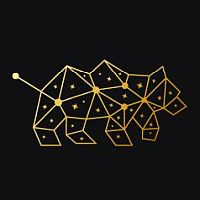
|
|
Star LoreStars and ConstellationsIn modern Technology and Society
|
|



|
|
Gemini
The Gemini spacecraft was the center part of NASA's second human spaceflight program.
|
 Rendezvous of Gemini 6A and 7, December 1965
Rendezvous of Gemini 6A and 7, December 1965Source: Wikipedia |



|
|
Hydra
The Toyota Alphard, manufactured since 2002, is a minivan named after the star
Alphard (α Hyd).
|
 Toyota Alphard
Toyota AlphardSource: Wikipedia |



|
|
Lyra
Vega, the brightest star in the constellation Lyra was the first star
to have a car named after it. The French Facel Vega was manufactured from 1954 to 1964.
|
 Facel Vega
Facel VegaSource: Wikipedia |

In 1971, Cevrolet launched the Chevrolet Vega,which was manufactured until 1977.
 Source:Wikipedia |
 Chevrolet Vega Coupe
Chevrolet Vega CoupeSource: Wikipedia |



|
|
Milky Way
In Chinese, the Milky Way is called Tianhe, written 天 河.
|

|
| Tianhe is also the name of two Chinese super computers, Tianhe-1 and Tianhe-2. |



|
|
Orion
The Orion spacecraft is a partially reusable space craft to be used in NASA's human spaceflight
programs.
|

|



|
|
Pleiades
In Japanese, the Pleiades are called 昴 Subaru, meaning "coming together" or "cluster."
|
 Subaru Logo Source: Wikipedia |



|
|
Ursa Major
Qixingtan (The Pond of Seven Stars), is a park in the Chinese City Guiyang.
|
 Qixingtan Park; trip.com
Qixingtan Park; trip.com
|


In Japanese, the Big Dipper is called Hokuto Shichisei, "Seven Stars of the Northern Dipper,"
which is written 北斗七星 in both Chinese and Japanese.
 Hokuto-kun, named after the Big Dipper is the mascot of the Hokkaido Prefectural Police.  He’s a hybrid of a rabbit, an owl, a fox, a horse, and a human.  Sources: Mondo Mascots, Hokkaido Prefectural Police |
 Hokuto-kun; Mondo Mascots
Hokuto-kun; Mondo Mascots
|


In Chinese, the Big Dipper is known as Běidǒu Qīxīng, the "Seven Stars of the Northern Dipper,"
which is written 北斗七星.
 The Chinese satellite navigation system BeiDou, providing global coverage for timing and navigation, is named after the "Northern Dipper".  Source: Wikipedia |
 BeiDou Satellite Navigation System
BeiDou Satellite Navigation SystemSource: spacenews.com
|


The National Aerospace Development Administration (NADA) is
North_Korea's official space agency of North Korea.
 The emblem of the NADA was instituted in 2014; according to NADA, it represents its character, mission, position and development prospects.  Also according to NADA, the Great Bear reflects the will of the space scientists of the DPRK to glorify Kim Il Sung's and Kim Jong Il's Korea as a space power.  Source: collectspace.com |
 NADA; collectspace.com
NADA; collectspace.com
|


| The Big Dipper can be found in company logos all over the world. Below is a small sample, selected merely for their artistic value and NOT for the company's product. |

 Big Dipper Food
Big Dipper Food |
 CLYW Yo-Yo
CLYW Yo-Yo |

 |
 Pennsylvania Dark Sky Park
Pennsylvania Dark Sky Park
|

 Big Dipper Co. Wedding Films
Big Dipper Co. Wedding Films |
 dribbble.com
dribbble.com |
 Ursa Brewing Company
Ursa Brewing Company
|
 BrandCrowd
BrandCrowd
|




|
Back to Star Lore |
Back to Mythology |
Back to Space Page |
Back to English |
 Back to Start Page |